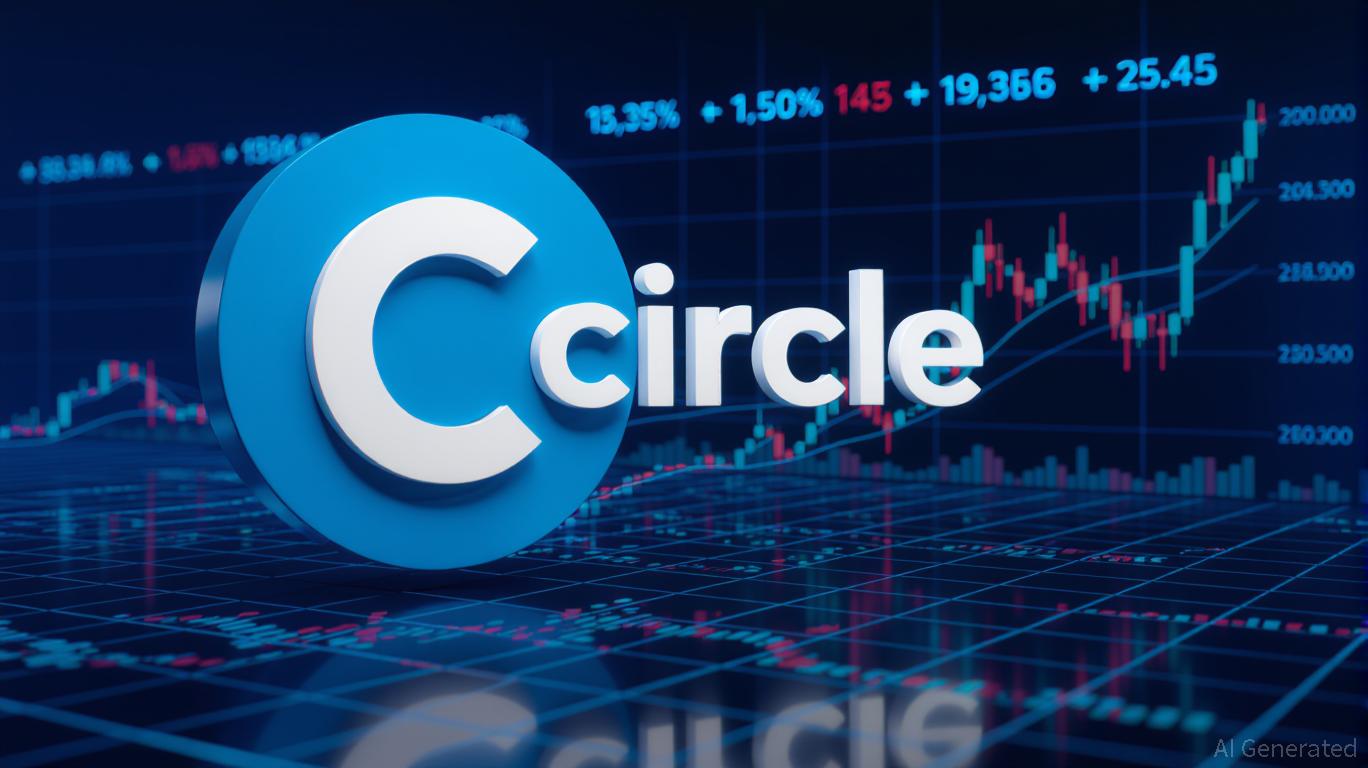Circle (CRCL): Regulatory Gridlock and Technical Weakness Signal a Bearish Turn
The Senate's bipartisan approval of the GENIUS Act in June 2025 briefly propelled
(CRCL) shares to an all-time high of $176, but the stalled House vote has exposed the company's precarious reliance on legislative success. With political headwinds mounting and technical indicators flashing warnings, Circle's stock now faces a high-risk environment. This analysis combines legislative dependency risks with price action to argue that investors should consider exiting positions before a potential collapse toward $144.Legislative Dependency: The Lifeblood of CRCL's Valuation
Circle's business model hinges on regulatory clarity for stablecoins like its USD Coin (USDC). The GENIUS Act, which mandates 1:1 reserve requirements and anti-money laundering (AML) compliance, was expected to validate Circle's operations and attract institutional investors. However, the House's delayed vote—and its competing STABLE Act—threaten to derail this progress.
Key Legislative Risks:
1. Yield Restrictions: The STABLE Act prohibits interest-bearing stablecoins, stripping Circle of its primary revenue stream (99% of profits come from interest on $60 billion in reserves).
2. Foreign Issuer Scrutiny: Stricter rules on non-U.S. issuers could hinder USDC's global adoption, where it competes with Tether's dominant 45% market share.
3. Political Gridlock: House Republicans like Rep. Mike Johnson aim to bundle the bill with anti-crypto measures, while Democrats oppose provisions favoring Big Tech. A failed vote would force amendments or delays, prolonging uncertainty.

Technical Analysis: Support Levels and Bearish Signals
Circle's stock has been a poster child for regulatory-driven volatility. The failed House vote has shattered the narrative of “legislative certainty,” pushing shares below critical support levels:
Price Action Breakdown
- Resistance at $176: This level represented the peak after the Senate's approval. A sustained close below it signals a loss of bullish momentum.
Key Support at $144: This marks the 38.2% Fibonacci retracement from the June high. A breach could trigger a freefall to $120, the 50% retracement level.
Volume Decline: Trading volume has shrunk by 40% since the Senate vote, indicating weakening conviction among buyers.
- RSI Divergence: The Relative Strength Index (RSI) remains in oversold territory (below 30), but price gains have not followed, signaling exhaustion.
Bearish Scenario
If the House fails to pass the GENIUS Act by September, Circle's stock could retrace 150% from its June peak. This would mean a drop to $88—a level last seen in early 2024—erasing the “regulatory optimism” premium.
Why the Downside Risk Outweighs Upside Potential
- Valuation Overhang: Circle's $42 billion market cap (as of July 2025) implies a 24x revenue multiple—far above peers like (PAYPAL) at 8x. A regulatory setback would force a reversion to fundamentals.
- Competitive Pressures: Tether's liquidity advantages and emerging high-yield stablecoins (e.g., USDe at 24.5% APY) threaten USDC's dominance.
- Interest Rate Sensitivity: A Federal Reserve rate cut (now priced at 70% probability by year-end) could reduce Circle's interest income by 10% for every 0.25% decline.
Investment Strategy: Exit Before the Tide Turns
The combination of legislative risks and deteriorating technicals creates a high-risk, low-reward scenario for Circle investors:
- Immediate Action: Close positions if shares dip below $176.
- Stop-Loss at $144: Set a stop-loss at this key support level to limit losses.
- Avoid New Entries: Wait until the House passes a GENIUS Act variant without yield restrictions or foreign issuer bans.
- Consider Shorting: Aggressive traders could short at current levels, targeting $120 or $88 if legislative gridlock persists.
Conclusion
Circle's stock is a microcosm of crypto's regulatory crossroads: legislative success could unlock trillions in institutional capital, but failure would expose its overvaluation and operational vulnerabilities. With the House vote stalled and technical indicators flashing red, investors are better served to exit now than to hope for a regulatory miracle. The path of least risk? Assume the worst—and act before the market does.
Final Warning: If the House's “Crypto Week” ends without progress, a collapse to $144 (or lower) is inevitable. The “buy the rumor” rally is over—time to sell the fact.
Sign up for free to continue reading
By continuing, I agree to the
Market Data Terms of Service and Privacy Statement

Comments
No comments yet